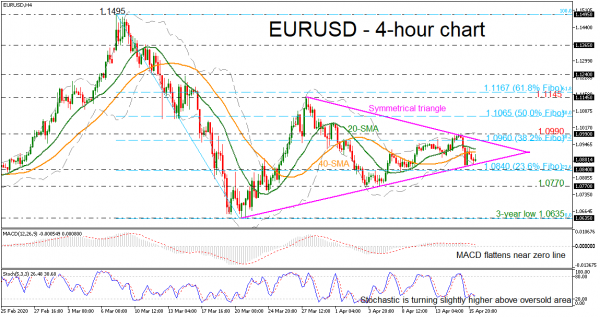EURUSD has been struggling within a symmetrical triangle over the last month, remaining within the squeezed Bollinger bands in the 4-hour chart. The ascent from the three-year low of 1.0635 drove the pair until the 1.1145 resistance but failed to hold near this level.
According to the technical indicators, the MACD is flattening marginally below the zero line with weak momentum, while the stochastic is heading slightly up, above the zero level, confirming the recent neutral mode on price.
A successful penetration of the triangle pattern to the downside could meet immediate support at the 1.0840 barrier, which is the 23.6% Fibonacci retracement level of the down leg from 1.1495 to 1.0635. More bearish pressures could hit the 1.0770 support, identified by the bottom on April 6. Steeper declines could see the three-year trough of 1.0635, achieved on March 20.
Alternatively, a rise above the 20- and 40-period simple moving averages (SMAs) could challenge the descending line and the 38.2% Fibonacci of 1.0960, which stands near the 1.0990 latest high and the upper Bollinger band. A break above this crucial level could send the market towards the 50.0% Fibonacci of 1.1065.
Summarizing, EURUSD has been developing in a sideways-triangle pattern in the short-term and any break either above 1.0990 or below 1.0840 could change the bias.












